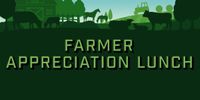It's an exciting time for conversation districts across the province with new boundaries, new names, and new funding opportunities.
As of January 1, 2020, conservation districts will now operate as Watershed Districts with their borders more accurately reflecting the watersheds they represent.
According to Pembina Valley Watershed District (PVWD) Executive Director Cliff Greenfield, last year, the government invested in a conservation trust, which means big things for environmental projects.
"These funds are dedicated to an endowment where the interest is spent on environmental projects. The kinds of projects we work on, in terms of sustainability and watershed health. It will effectively double our budgets, and there's going to be roughly six to seven million dollars available for not just [watershed districts] but environmental programming in general."
For the PVWD, Greenfield says double the budget means twice as many projects.
Another benefit of this fund will be more significant incentives for farmers and landowners to take part in ecological goods and services programs.
In the past, Greenfield says farmers often had to take the financial brunt if there were any agricultural setbacks in place of environmental favour.
Now, if they take part in management practices to improve sustainability, water quality, and soil health if they face any agricultural setbacks, there could be an annual payment as well.
With new borders come new partners, and last week, PVWC met with their new board, including the new regions they cover.
The area is based on the Pembina River watershed, and that shift now includes Turtle Mountain and Killarney, parts of Morden, Boissevain, Argyle, and Prairie Lakes.
The change does mean the loss of some area is Stanley, Pembina, and Loren, but the PVWD still encompasses Dead Horse Creek, Hespeler, and buffalo, and in the future, Greenfield says they hope to expand to the red river.
These partnerships are instrumental in the success of watershed districts, says Greenfield, as it gives them first-hand knowledge of the work that needs to be done.
"They're representatives from the municipalities into the five different sub-watersheds that we're involved with. The real basis of our organization is grassroots. We've got local people from sub-watersheds who know the land, know the people, and know the issues."
Greenfield notes some of these people are meeting for the first time, but many seemed excited to see the next steps for the organization and to welcome the challenges of the new chapter that's beginning.

















